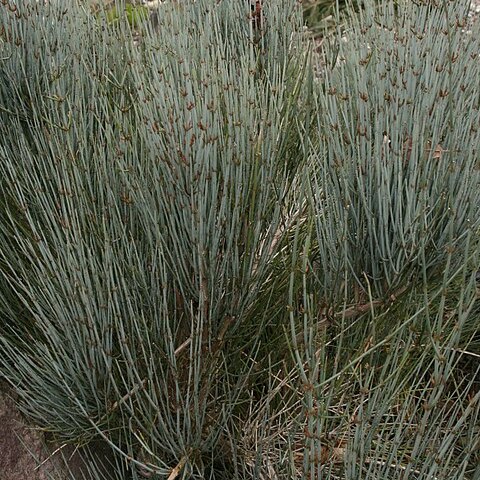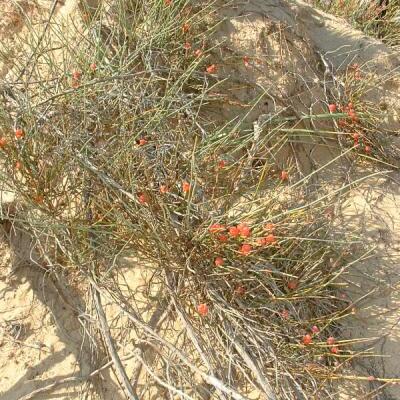Shrubs, subshrubs, or herbs, dioecious, rarely monoecious; stems erect, procumbent, or occasionally climbing, jointed, much branched, photosynthetic; branchlets opposite or whorled, green, terete, longitudinally grooved. Leaves opposite or in whorls of 3, scalelike, basally ± connate and reduced to membranous sheaths, generally ephemeral, mostly not photosynthetic; resin canals absent. Cones terminal or axillary, ovoid or ellipsoid. Pollen cones solitary or clustered at nodes, each cone composed of membranous bracts arranged in 2-8 decussate pairs or whorls of 3; proximal bracts empty; each distal bract subtending a male flower composed of 2 basally fused, orbicular or obovate scales (false perianth); anthers sessile or stipitate on staminal column. Seed cones opposite or in whorls of 3 or 4 at nodes, each cone composed of overlapping bracts; bracts arranged in 2-10 decussate pairs or whorls of 3, red and fleshy at maturity (rarely brown and membranous), proximal bracts empty, most distal bracts subtending an axillary female flower composed of a pair of fused, leathery scales (false perianth) enclosing ovule with a single membranous integument prolonged into a slender, tubular micropyle. Seeds 1 or 2(or 3) per cone. Cotyledons 2. Germination epigeal. 2n = 14*, ?24*, 28*, ?36*, 56*.


